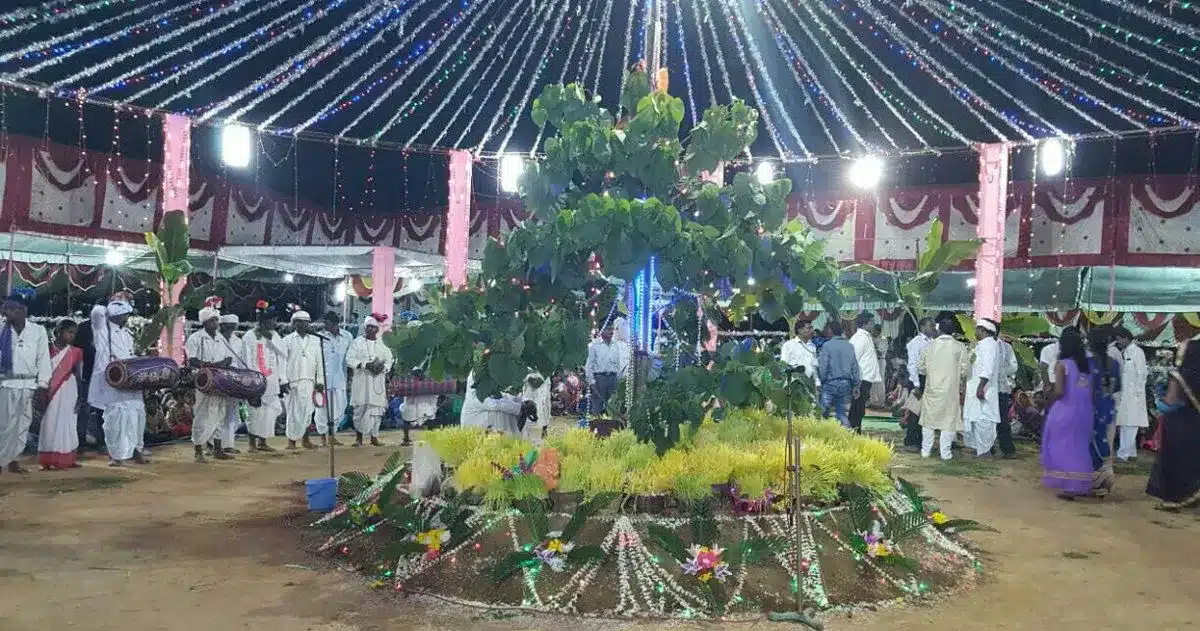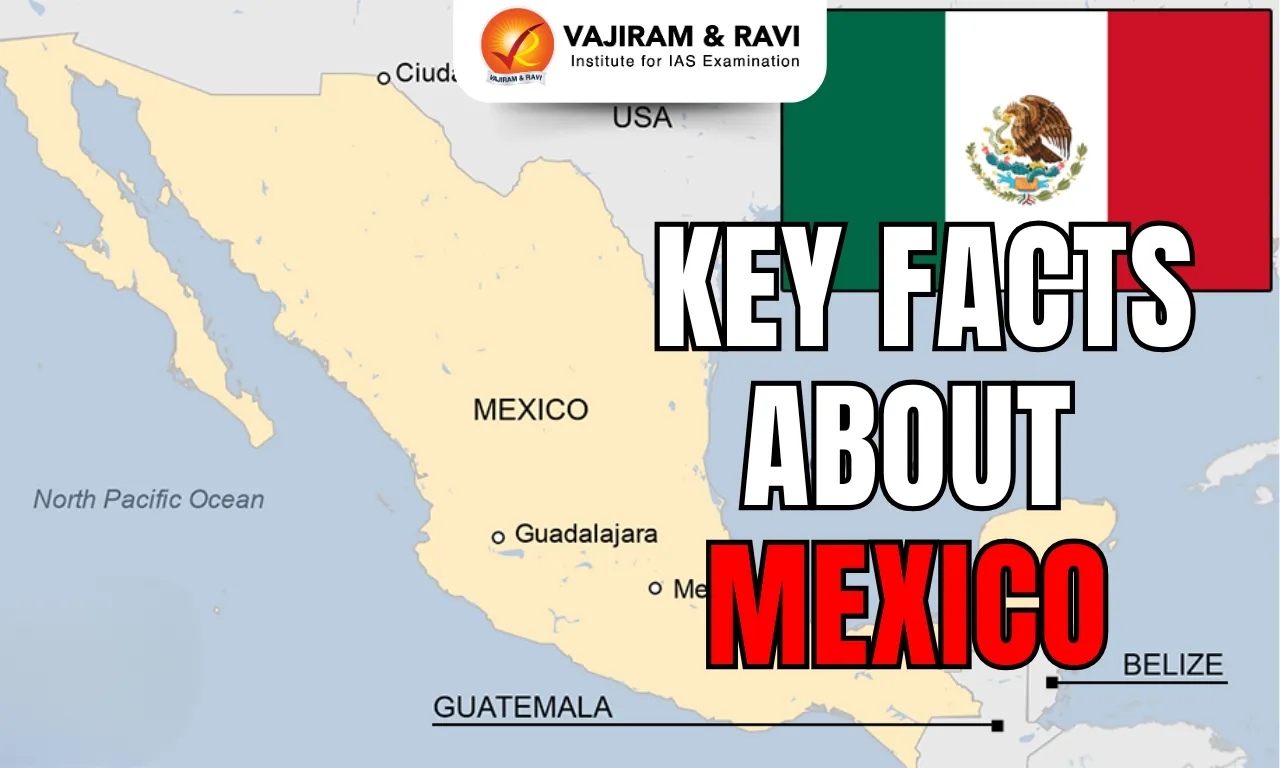About Karam Festival:
- Karma Puja, one of the most popular festivals, is related to the harvest and a tribute to the Karam tree. This tree symbolises fertility, prosperity and everything that is auspicious.
- Origin: The origin of the festival can be traced to the beginning of agriculture by tribal communities.
- How is it celebrated?
- About a week before the festival commences, young women bring clear sand from the river, in which they sow seven types of grains.
- On the day of the festival, a branch of the Karam tree is planted in the courtyard or ‘akhra’.
- Devotees come with jawa (hibiscus) flowers, and the pahan (priest) worships the Karam Raja. Dancing and singing of traditional Karam songs follow.
- The festival concludes with the immersion of the Karam branch in a river or pond, and the jawa is distributed among the devotees.
- Towards the end of the Karam festival, branches from sal or bhelua trees are often planted in the fields with the hope that the Karam Raja/ Devta will protect their crops.
- It is traditionally celebrated on the Ekadashi tithi (eleventh day) of the lunar fortnight in the month of Bhado/ Bhadra, which corresponds to August-September in the Gregorian calendar.
- The festival is popular especially among the Munda, Ho, Oraon, Baiga, Kharia, and Santhal peoples.
- It is mainly celebrated in Jharkhand, West Bengal, Bihar, Madhya Pradesh, Chhattisgarh, Assam, and Odisha.
Q1: What is the Gregorian calendar?
It is a solar dating system used by most of the world. It is named for Pope Gregory XIII, who issued the papal bull Inter gravissimas in 1582, announcing calendar reforms for all of Catholic Christendom. The Gregorian calendar modified the existing Julian calendar, which Julius Caesar had introduced to the ancient Roman Republic in 46 BCE.
Source: Worshipping the Karam tree: Myth and farm practice in the tribal harvest festival of Karma
Last updated on December, 2025
→ Check out the latest UPSC Syllabus 2026 here.
→ Join Vajiram & Ravi’s Interview Guidance Programme for expert help to crack your final UPSC stage.
→ UPSC Mains Result 2025 is now out.
→ UPSC Notification 2026 is scheduled to be released on January 14, 2026.
→ UPSC Calendar 2026 is released on 15th May, 2025.
→ The UPSC Vacancy 2025 were released 1129, out of which 979 were for UPSC CSE and remaining 150 are for UPSC IFoS.
→ UPSC Prelims 2026 will be conducted on 24th May, 2026 & UPSC Mains 2026 will be conducted on 21st August 2026.
→ The UPSC Selection Process is of 3 stages-Prelims, Mains and Interview.
→ UPSC Result 2024 is released with latest UPSC Marksheet 2024. Check Now!
→ UPSC Prelims Result 2025 is out now for the CSE held on 25 May 2025.
→ UPSC Toppers List 2024 is released now. Shakti Dubey is UPSC AIR 1 2024 Topper.
→ UPSC Prelims Question Paper 2025 and Unofficial Prelims Answer Key 2025 are available now.
→ UPSC Mains Question Paper 2025 is out for Essay, GS 1, 2, 3 & GS 4.
→ UPSC Mains Indian Language Question Paper 2025 is now out.
→ UPSC Mains Optional Question Paper 2025 is now out.
→ Also check Best IAS Coaching in Delhi

















